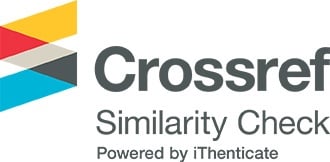NGHIÊN CỨU NỒNG ĐỘ NT-proBNP Ở BỆNH NHÂN RUNG NHĨ VÀ SUY TIM CÓ PHÂN SUẤT TỐNG MÁU THẤT TRÁI GIẢM
Các tác giả
DOI: https://doi.org/10.59294/HIUJS.KHSK.2025.001Từ khóa:
suy tim, NT-proBNP, rung nhĩ, phân suất tống máu, chẩn đoánTóm tắt
Nghiên cứu tìm hiểu vai trò của NT-proBNP trong chuẩn đoán và phân tầng mức độ tình trạng suy tim và rung nhĩ của người bệnh với mục tiêu đánh giá nồng độ NT-proBNP ở bệnh nhân rung nhĩ có suy tim với phân suất tống máu thất trái giảm (HFrEF) tại Bệnh viện Trung ương Huế năm 2024 và xác định một số mối liên quan giữa nồng độ NT-proBNP với tình trạng suy tim và rung nhĩ của đối tượng nghiên cứu. Nghiên cứu mô tả cắt ngang được thực hiện trên 69 bệnh nhân suy tim có rung nhĩ đang điều trị tại Khoa Nội tim mạch tại Bệnh viện Trung ương Huế. Kết quả nghiên cứu cũng chỉ ra rằng nồng độ NT-proBNP có sự khác biệt có ý nghĩa thống kê theo phân suất tống máu và phân độ suy tim NYHA (p < 0.05). Cụ thể, bệnh nhân có EF ≤ 30% có NT-proBNP trung vị cao hơn đáng kể so với nhóm EF 31 - 40%. Ngoài ra, nồng độ NT-proBNP tăng dần theo phân độ NYHA, từ mức 2,650 pg/mL ở NYHA II lên 17,425 pg/mL ở NYHA IV, phản ánh mức độ suy tim ngày càng nặng. Đáng chú ý, khi phân tích đường cong ROC, nghiên cứu xác định được điểm cắt NT-proBNP là 7,214 pg/mL, có giá trị trong phân biệt bệnh nhân suy tim độ II với suy tim độ III trở lên, với độ nhạy 68%, độ đặc hiệu 82.8%. Điều này cho thấy NT-proBNP không chỉ là một dấu ấn chẩn đoán mà còn giúp phân tầng nguy cơ và tiên lượng bệnh nhân.
Abstract
This study explores the role of NT-proBNP in diagnosing and stratifying the severity of heart failure and atrial fibrillation in patients. The study aims to describe NT-proBNP levels in patients with atrial fibrillation and heart failure with reduced ejection fraction (HFrEF) at Hue Central Hospital in 2024 and to investigate the relationships between NT-proBNP levels and the severity of heart failure and atrial fibrillation. A cross-sectional descriptive study was conducted on 69 patients with heart failure and atrial fibrillation undergoing treatment at the Cardiology Department of Hue Central Hospital. The results indicate that NT-proBNP levels significantly differ by ejection fraction (EF) and NYHA heart failure classification (p < 0.05). Specifically, patients with EF ≤ 30% had significantly higher median NT-proBNP levels than those with EF 31 - 40%. Additionally, NT-proBNP levels increased progressively with NYHA classification, from 2,650 pg/mL in NYHA II to 17,425 pg/mL in NYHA IV, reflecting worsening heart failure severity. Notably, ROC curve analysis identified an NT-proBNP cutoff value of 7,214 pg/mL, which was effective in distinguishing NYHA II heart failure from NYHA III or higher, with 68% sensitivity and 82.8% specificity. This finding suggests that NT-proBNP is not only a diagnostic biomarker but also valuable for risk stratification and patient prognosis.
Tài liệu tham khảo
[1] S. K. Salah, S. Stienen, Y. M. Pinto, et al., “Prognosis and NT-proBNP in heart failure patients with preserved versus reduced ejection fraction,” Heart, vol. 105, no. 15, pp. 1182-1189, Aug. 2019, doi: 10.1136/heartjnl-2018-314173.
DOI: https://doi.org/10.1136/heartjnl-2018-314173[2] E. N. Mehrabi, V. T. Khosroshahi, and S. S. Athari, “Relationship of atrial fibrillation and N terminal pro brain natriuretic peptide in heart failure patients,” ESC Heart Fail., vol. 10, no. 6, pp. 3250-3257, Dec. 2023, doi: 10.1002/ehf2.14542.
DOI: https://doi.org/10.1002/ehf2.14542[3] S. M. Erhahn, C. Becker, M. Mende, et al., “NT-proBNP as a marker for atrial fibrillation and heart failure in four observational outpatient trials,” ESC Heart Fail., vol. 9, no. 1, pp. 100-109, Feb. 2022, doi: 10.1002/ehf2.13703.
DOI: https://doi.org/10.1002/ehf2.13703[4] J. Spinar, L. Spinarova, F. Malek, O. Ludka, et al., “Prognostic value of NT-proBNP added to clinical parameters to predict two-year prognosis of chronic heart failure patients with mid-range and reduced ejection fraction - A report from FAR NHL prospective registry,” PLoS One, vol. 14, no. 3, pp. e0214363, Mar. 2019, doi: 10.1371/journal.pone.0214363.
DOI: https://doi.org/10.1371/journal.pone.0214363[5] J. L. Januzzi, A. Camargo, A. Anwaruddin, et al., “The N-terminal Pro-BNP investigation of dyspnea in the emergency department (PRIDE) study,” Am. J. Cardiol., vol. 95, no. 8, pp. 948-954, Apr. 2005, doi: 10.1016/j.amjcard.2004.12.032.
DOI: https://doi.org/10.1016/j.amjcard.2004.12.032[6] H. Hijazi, L. Wallentin, C. Siegbahn, B. Andersson, and L. H. Lind, “Prognostic value of biomarkers in patients with atrial fibrillation: a report from the ARISTOTLE trial,” Circulation, vol. 128, no. 22, pp. 2290-2298, Nov. 2013, doi: 10.1161/CIRCULATIONAHA.113.002589.
[7] R. Rørth, P. S. Jhund, M. B. Yilmaz, et al., “Comparison of BNP and NT-proBNP in patients with heart failure and reduced ejection fraction,” Circ. Heart Fail., vol. 13, no. 2, pp. e006541, Feb. 2020, doi: 10.1161/CIRCHEARTFAILURE.119.006541.
DOI: https://doi.org/10.1161/CIRCHEARTFAILURE.119.006541[8] L. G. Olsson, S. Swedberg, M. Ducharme, et al., “Natriuretic peptide levels increase with atrial fibrillation duration and are associated with cardiac structural changes,” Heart, vol. 92, no. 9, pp. 1206-1210, Sep. 2006, doi: 10.1136/hrt.2005.080648.
[9] T. J. Wang, M. G. Larson, D. Levy, et al., “Natriuretic peptide levels in the community: the Framingham Heart Study,” Circulation, vol. 107, no. 5, pp. 617-623, Feb. 2003, doi: 10.1161/01.CIR.0000047278.74061.F9.
[10] A. C. Belagavi, M. Rao, A. Y. Pillai, and U. S. Srihari, “Correlation between NT-proBNP and left ventricular ejection fraction in elderly patients presenting to emergency department with dyspnoea,” Indian Heart J., vol. 64, no. 3, pp. 302-304, May-Jun. 2012, doi: 10.1016/S0019-4832(12)60091-1.
[11] A. C. Belagavi, M. Rao, A. Y. Pillai, and U. S. Srihari, "Correlation between NT-proBNP and left ventricular ejection fraction in elderly patients presenting to emergency department with dyspnoea," Indian Heart Journal, vol. 64, no. 3, pp. 302-304, May-Jun. 2012, doi: 10.1016/S0019-4832(12)60091-1.
DOI: https://doi.org/10.1016/S0019-4832(12)60091-1[12] P. Welsh, R. T. Campbell, L. Mooney, D. M. Kimenai, C. Hayward, A. Campbell, D. Porteous, and N. Sattar, "Reference Ranges for NT-proBNP (N-Terminal Pro-B-Type Natriuretic Peptide) and Risk Factors for Higher NT-proBNP Concentrations in a Large General Population Cohort," Circulation: Heart Failure, vol. 15, no. 10, 2022. doi: 0.1161/CIRCHEARTFAILURE.121.009427.
DOI: https://doi.org/10.1161/CIRCHEARTFAILURE.121.009427Tải xuống
Tải xuống: 147











